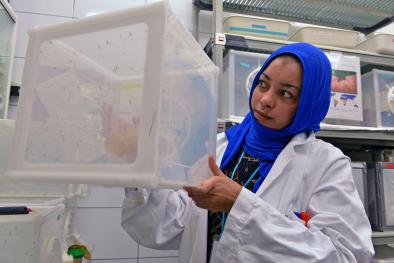Science Source
The global distribution of the arbovirus vectors Aedes aegypti and Ae. albopictus
- States that dengue and chikungunya are increasing global public health concerns due to their rapid geographical spread and increasing disease burden
- States that knowledge of the contemporary distribution of their shared vectors, Aedes aegypti and Aedes albopictus remains incomplete and is complicated by an ongoing range expansion fuelled by increased global trade and travel
- Compiles the largest contemporary database for both species and pairs it with relevant environmental variables predicting their global distribution
- Shows the Aedes distributions to be the widest ever recorded; now extensive in all continents, including North America and Europe
- Maps indicate the spatial limits of current autochthonous transmission of dengue and chikungunya viruses
Related Content
Science Source
| The Lancet
El Niño and climate change—contributing factors in the dispersal of Zika virus in the Americas? - The Lancet
Shlomit Paz, Jan C Semenza
Science Source
| Proceedings of the National Academy of Sciences
Global risk model for vector-borne transmission of Zika virus reveals the role of El Niño 2015
Cyril Caminade, Joanne Turner, Soeren Metelmann et al
Headline

Apr 7, 2017 | Carbon Brief
Zika outbreak ‘fuelled by’ El Niño and climate change
Science Source
| MMWR. Morbidity and Mortality Weekly Report
Vital Signs: Update on Zika Virus–Associated Birth Defects and Evaluation of All U.S. Infants with Congenital Zika Virus Exposure — U.S. Zika Pregnancy Registry, 2016
Megan R. Reynolds, MPH; Abbey M. Jones, MPH; Emily E. Petersen et al


